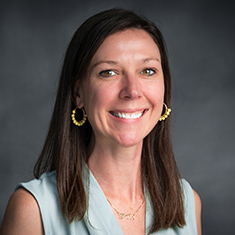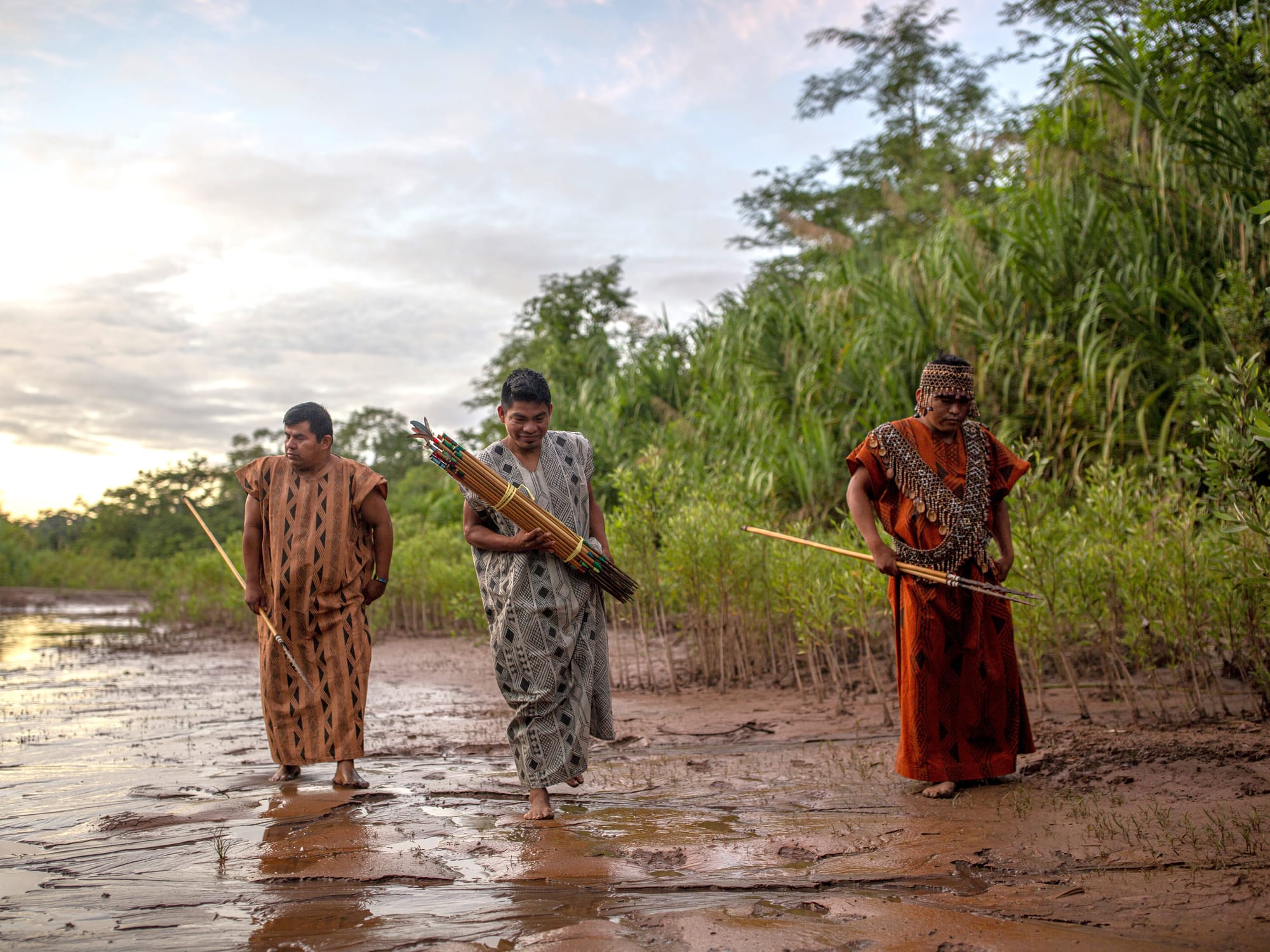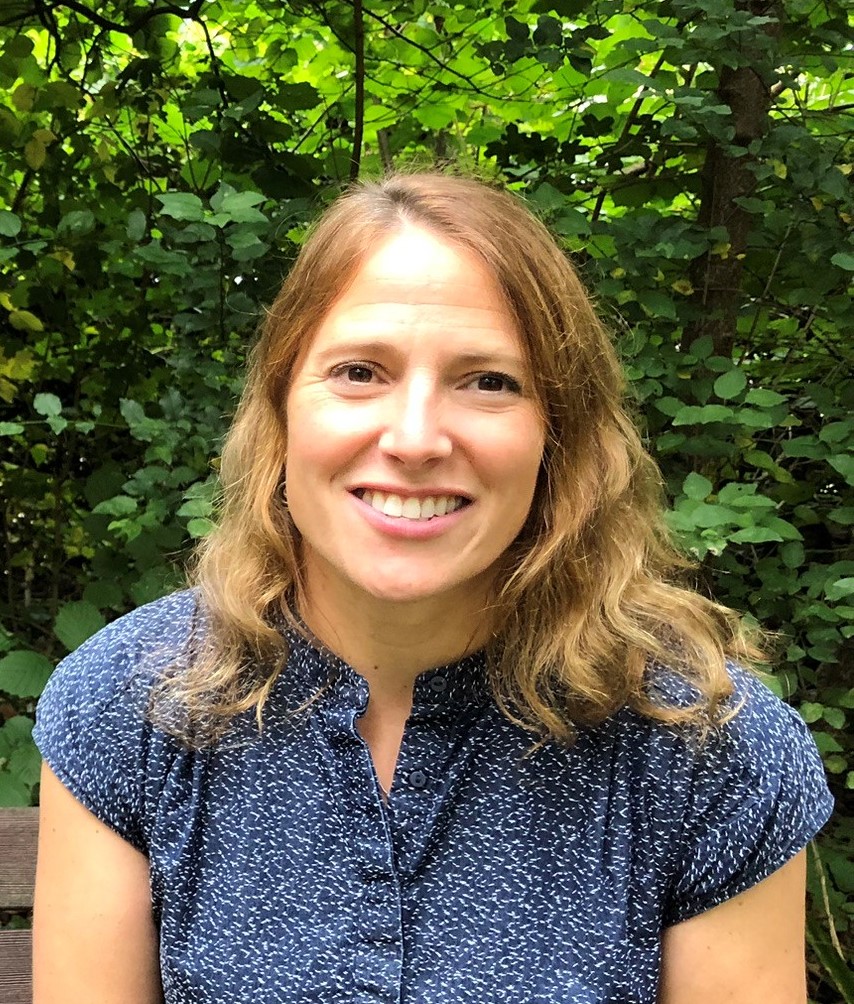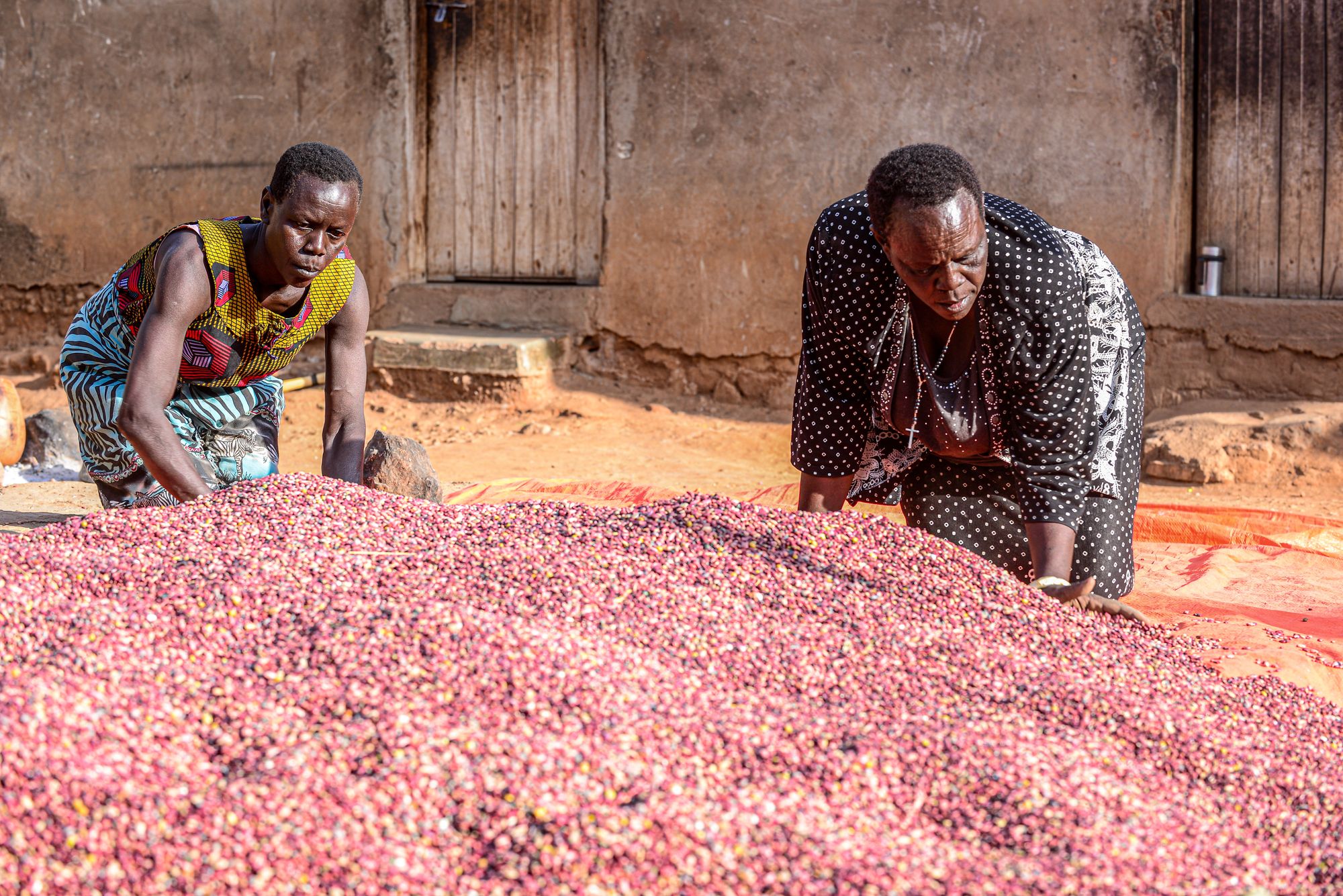We have only just begun to scratch the surface of the secrets held under the 2.8 million-square-mile Amazon rainforest canopy and its immense natural, social, and cultural resources. One thing we do know is that, as one of the largest tracts of tropical forest, the Amazon contains approximately 123 billion tons of carbon above and below ground. This vast forest is hanging on by a thread as a carbon sink, with parts such as the southeast already becoming carbon sources due predominantly to land clearing for agriculture and ranching, and to forest fires.
We also know that, globally, forests absorb about twice as many tons of carbon dioxide as they emit. But location matters. For example, Southeast Asia has become a net carbon source due to deforestation for plantations, fires, and the draining of carbon-rich peatlands. Many researchers worry that the Amazon is approaching a tipping point, also becoming a carbon source and dramatically changing ecologically, if we do not do more to curb the current rate of deforestation. Engaging with local people in that effort through collaborative monitoring networks is proving to be an important part of the fight against climate change.
Carbon Sources release carbon into the atmosphere and can be anthropogenic—such as through burning fossil fuels or deforestation—or natural, such as volcanic eruptions.
Indigenous Peoples on the Frontlines
Within the Amazon, research shows that forest areas managed by Indigenous Peoples, especially those with land titles, are better managed and more efficient carbon sinks than any other areas of the forest. Between 2001 and 2021, Indigenous territories across the nine countries of the Amazon Basin, emitted 120 million tonnes of CO2e per year, while those same forests sequestered 460 million tonnes of CO2e per year—effectively sinking 340 million tonnes of carbon per year. Indigenous lands, both legally titled and customary, show lower deforestation rates compared to non-indigenous lands across the Amazon. Indigenous People are, simply put, better environmental stewards of their lands, which provide them with food, water, medicine, energy, homes, and spiritual and cultural grounding.
Holding (formally or informally) close to 30 percent of the Amazon Basin, Indigenous People are a vital element in maintaining the Amazon as a carbon sink, to the benefit of the rest of the planet, but the threats to their lands and lives are constant. Drug trafficking and organized crime, for example, have increasingly degraded and deforested the jungle, with a particular surge in Peru, where 99 percent of the coca grown is within the Amazon Basin.
The cultivation and transport of drugs exacerbates tensions between Indigenous and non-Indigenous communities and is associated with other crimes that hurt society, including illegal logging, wildlife trafficking, sexual exploitation, human trafficking, and threats and violence—sometimes lethal—against environmental defenders. Illegal mining destroys the landscape, leaving toxic mercury in the soil and polluting the waterways. In Peru’s Madre de Dios, for example, artisanal gold mining accounts for 50 percent of the economy of the region, but 90 percent is illegal or informal.
The odds are certainly against many Indigenous groups, who lack connectivity, adequate infrastructure, coverage, and legal standing. The territories are often difficult to access by the state, which also struggles with corruption, especially in places where narco-trafficking and illegal mining are prevalent.
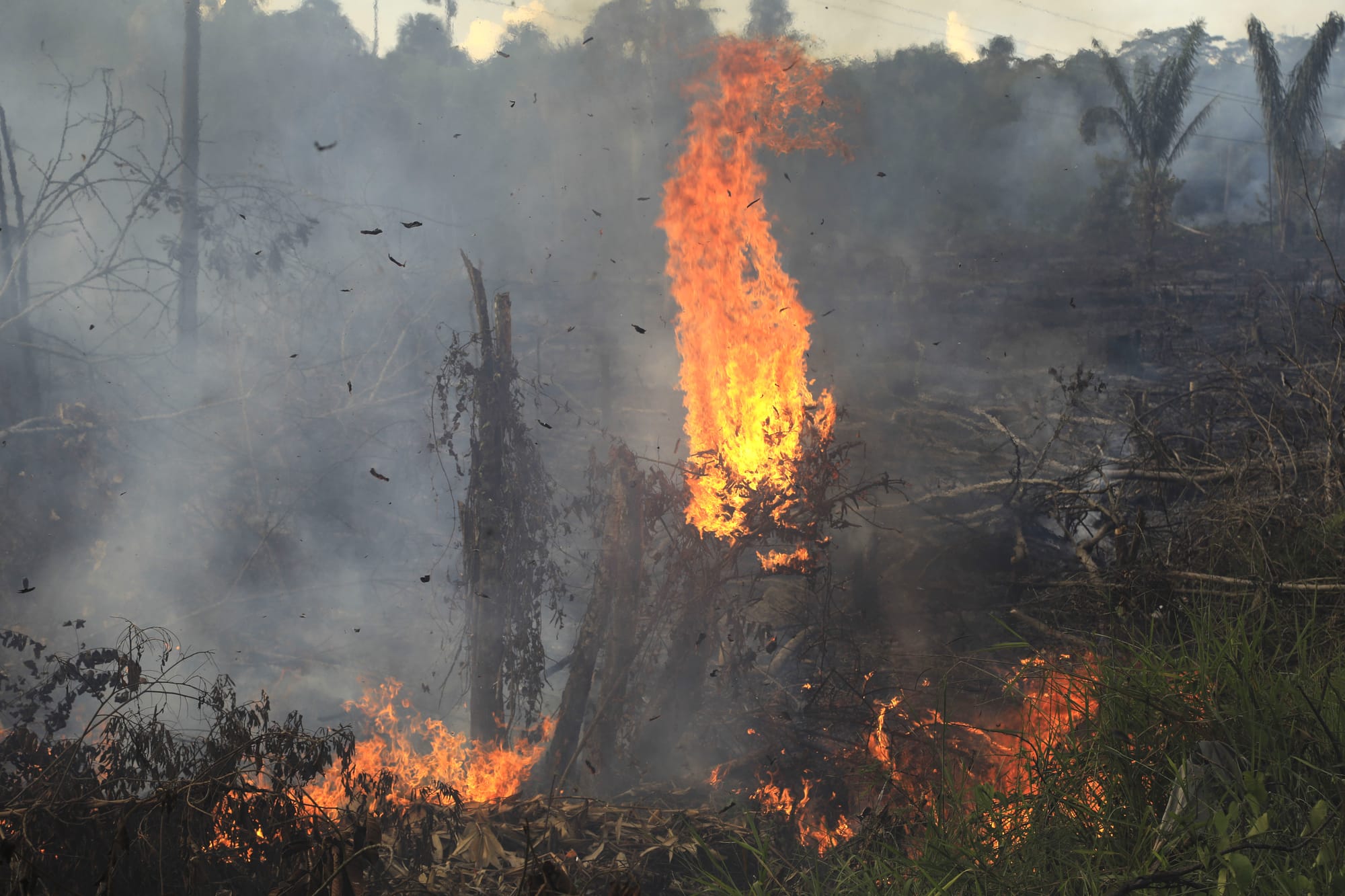
The Role of Inclusive Monitoring Networks
Monitoring forest loss and other environmental degradation is difficult across large, dense forests and often entails personal risk. One important way to increase the coverage and scale of efforts to retain the Amazon as a carbon sink is to work with networks of people who can bring together the various forms of land stewardship and protection, including forest and conservation concessions, indigenous territories, civil society, and government of protected areas. These monitoring networks aim to prevent illicit activities in their territories while reducing deforestation and maintaining carbon sequestration—using technology to remotely and safely monitor larger swaths of territory and work with authorities to provide data in real-time.
The USAID Prevent project, implemented by DAI, demonstrates how such partnerships can come about when organizations align under the common objective of protecting the rainforest for biodiversity conservation, economic security, and sustainable development. Using grants and technical assistance, USAID Prevent helped establish three monitoring networks in the Peruvian Amazon regions of Madre de Dios, Loreto, and Ucayali with organizations whose territories cover 720,000 hectares of forest.
Each monitoring network is adapted to its local context and unique to its local networks and economies. A bottom-up structure and system which all parties can agree is critical, where incentives align and there is flexibility for new forest stewards to come online and collaborate with fellow forest users.
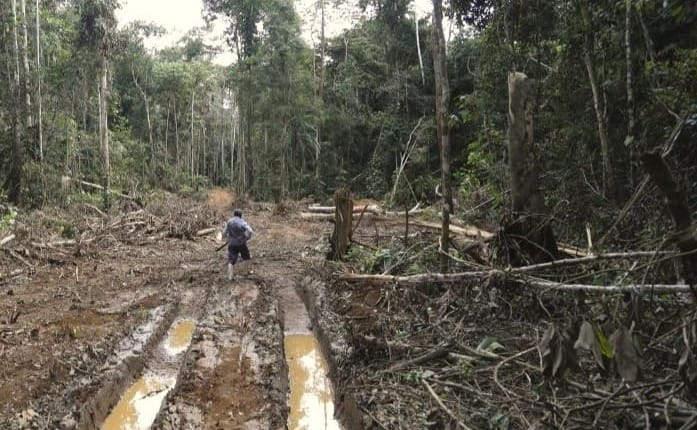
Lessons for Replication
Establishing these networks offered the following lessons for replication in new areas:
Power in Numbers: Peru’s forest stewards know that acting collectively is far more effective than acting alone. Transparency International gives Peru a 36/100 (0 being highly corrupt) and 30 percent of Peruvians who used a public service reported paying a bribe to an official in 2019. Where impunity is the norm, people lose trust in the system to respond when they submit a complaint for environmental crimes. Collective action gives network members a louder voice and more coverage and that can lead to pressure on government actors to respond. It is also a way to pool resources and attract funding. Proposals for additional funds that cover small pieces of territory or benefit only a few dozen people are much more difficult to fund than those that cover hundreds of thousands of hectares and could benefit thousands.
Building Trust. Trust is fundamental to collective progress but difficult to build, particularly in the Amazonian region, where there is history of mistrust between civil society, Indigenous organizations, authorities, and the private sector. Building trust takes time and iteration. It requires dedicated spaces in which people can come together to listen and find solutions to difficult issues. For representatives of these networks, working as a collective has led to new opportunities to bring issues and seek resolution. For example, the regional governments lead “Mesas Regionales,” or regional roundtables, on which the networks now have a seat—enabling them to bring issues around deforestation and environmental crime to the attention of local and regional authorities. In the Peruvian Amazon, where there are few such opportunities for forest users, the regional monitoring networks provide a formal space for participants to build bridges between forest user organizations and relevant authorities.
(Conservation) Market Systems. Markets play a significant role in the ability to conserve and manage the Amazon’s resources, and market actors are key partners in combatting threats to the forest. In the USAID Prevent experience, partners within regional monitoring networks that tend to fall into the conservation category have not always seen the value of the private sector in the protection of the Amazon. Many in this camp often suspect the forest management companies of being responsible for land grabbing and deforestation. That said, companies and private concessionaires that hold titles and responsible concessions, such as Brazil Nut Concession Association (RONAP), a Brazil nut association in Madre de Dios, are key to fostering a healthy Amazon Forest that increases carbon sequestration. RONAP manages forest resources sustainably to sell Brazil nuts to international markets and has a built-in incentive to preserve the ecosystem on which it depends.
Video: Yackxeri Vela is an environmental monitor and member of RONAP, an Amazon Brazil nut Gatherers Association that contributes to the conservation of Amazon Brazil nut forests.
Working with other organizations in the regional networks allows additional mobilization of resources, such as climate or conservation finance, and access to new markets—including carbon markets—that provide incentives to strengthen common conservation goals. For example, the Madre de Dios Network is working with USAID Prevent to develop a concept note for submission to the Green Climate Fund with the key local partner AIDER, a local leader in conservation and sustainable development efforts in Peru.
Technology for Monitoring. Technology offers safer monitoring of large areas and can address one of the biggest challenges for Indigenous groups in particular: improving connectivity. While drones have been a game changer in effective monitoring, the aerial information acquired needs to go somewhere and be used appropriately. USAID Prevent has invested in connecting forest monitors with information-sharing systems in remote environments. The technology can work offline to monitor and report forest users’ commitments as well as alert authorities of potential infractions. USAID Prevent bolstered the Indigenous Satellite Information Center of ORAU (the Ucayali Regional Indigenous Association), Imenko Tsiroti, with interconnection to the Regional Government and Regional Environmental Crimes Office Satellite Monitoring Unit. Monitoring technology is at the heart of the improved forest management model developed by USAID Prevent with OSINFOR and has been adopted by the networks and key private sector partners, such as Candela Peru and Bosques Amazónicos (BAM).
Recently, USAID Prevent's networks have received international recognition: the Madre de Dios Monitoring Network won the Premio Sacha in San José, Costa Rica in November 2023 for its work to confront illicit activities and fight climate change. Projects such as USAID Prevent must continue to find ways to bring together local organizations. With the Amazon at a tipping point, every effort we can make to support Indigenous groups and forest users in conserving their land will have an outsize impact on protecting our planet.
